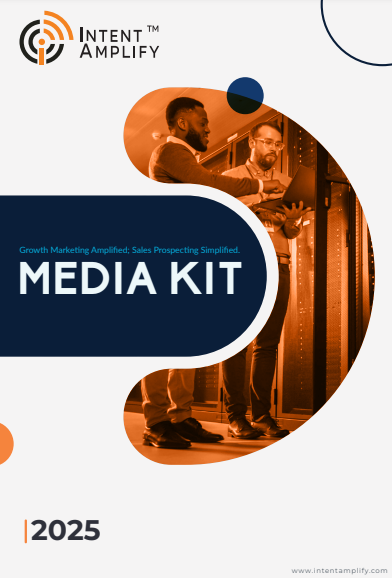
5 Mistakes You Should Avoid While Planning B2B Lead Generation Strategies
- Last updated on: July 1, 2025
AI writes your emails. Intent data flows into your CRM in real time. Automation scores lead before your sales team even picks up the phone. On paper, it looks like a well-oiled machine. And yet… your team is still chasing wrong leads, cold accounts, or buyers who simply aren’t ready. The problem isn’t the tech – it’s the thinking behind how it’s used.
In 2025, B2B lead generation is less about the stack and more about the strategy. When that strategy breaks, it often comes down to a few critical missteps. Let’s see five mistakes you should avoid whole planning of B2B Lead Generation.
1. Targeting Too Broad: Confusing Reach and Relevance
Attempting to catch all businesses in the universe may seem lofty, but it’s the costliest error in B2B lead generation campaigns. Quantity never translates to quality.
When your Ideal Customer Profile is not well-defined, your campaigns are watered down. You’re throwing good ad spend at companies that were never going to convert anyway. This not only overinflates your CPL (cost per lead), but it also wastes your sales team’s time with unqualified leads. 67% of B2B marketers identify poor audience segmentation as their biggest lead quality problem, according to a 2025 Gartner report.
Instead, laser-target. Segment your list on firmographic characteristics, behavior, and intent signals. Utilize Bombora, ZoomInfo, or LinkedIn Matched Audiences to filter your target list. And don’t forget, a smaller, hyper-engaged list always trumps a giant unqualified list.
2. Overlooking Buyer Intent Signals: Timing Is Everything
One of the subtler B2B lead generation mistakes is focusing only on who your audience is, and not when they’re ready to engage. Many B2B companies still operate on fixed calendar cadences, instead of listening to real-time buying signals. Imagine pitching a cybersecurity solution to a company that just completed a multi-year deployment. You’re not just late — you’re wasting everyone’s time.
Platforms such as Intent Amplify monitor digital body language: comparison page visits, download behavior, and even job postings. These indicators suggest where buyers are in the journey. Forrester says companies leveraging intent data experience a 2.5x increase in engagement. So if you’re mapping out B2B lead generation plans for 2025, don’t cast a net. Employ a radar.
3. Over-Reliance on Automation Without Personalization
Yes, marketing automation and AI tools have revolutionized outreach. But one of the most common B2B lead generation mistakes is relying on automation alone without personalization. And the buyers are turning a deaf ear. Consider, would you reply to a mass message that could’ve been sent to 500 others? As per a McKinsey study in 2025, personalized emails receive 6x higher conversion rates than batch-and-blast campaigns.
Use automation to scale efficiently, but never at the expense of relevance. Group your emails around buyer challenges, customize content for each sector, and keep the messaging warm and relatable. Even AI-generated sequences need a human editor who understands context. If you’re using AI, make sure it’s trained on your ICP’s behaviors, not just templates. Balance the tech with a human touch.
4. Focusing on Leads Instead of the Buying Committee
Here’s a fact that B2B marketers tend to forget: your customer isn’t one individual. It’s a committee. Gartner makes the point that the average B2B purchasing decision involves 6 to 10 stakeholders. However, most lead generation approaches continue to pursue one contact per account. That’s as effective as playing an entire soccer match solo against a full squad.
ABM (Account-Based Marketing) has expanded as it mirrors how B2B purchasing actually functions. Successful marketers are moving away from MQLs to MQAs — Marketing Qualified Accounts. They’re developing campaigns that catch pain points in sales, finance, IT, and operations, not simply the end user.
So, curate your content for every persona in a buying group. A CFO is concerned with ROI. A CTO is concerned with integration speed. Your plan must reflect that ecosystem, not a linear funnel.
5. Forgetting Post-Lead Nurture: The Funnel Doesn’t Stop at Form-Fill
You captured the lead — nice job. But then what? One of the most damaging B2B lead generation mistakes is thinking the job ends with a form fill. In reality, lead generation is just the beginning. Far too many leads in the database have no cohesive nurture stream. No follow-up rhythm, focused content, or scoring. Your B2B lead generation playbooks need to have pre-built post-capture processes. Leverage lead scoring models that monitor engagement with content types.
Send value-driven emails that assist, not merely sell. Incorporate sales touches, webinars, and gated content that address buyer apprehensions. In 2025, the best-performing teams aren’t merely capturing leads. They’re building long-term relationships.
Strategy Isn’t Just Setup — It’s Discipline
Avoiding these five B2B lead generation mistakes isn’t about perfection. It’s about consistency. The most powerful B2B lead generation strategies in 2025 are those that combine smart targeting, buyer behavior insights, personalized automation, multi-stakeholder engagement, and long-term nurturing. If your approach skips any of those steps, you’re not just leaking leads — you’re missing revenue.
Why Smart B2B Teams Choose Intent Amplify?
In a world overwhelmed with tools and strategies, Intent Amplify is different by simply doing what most platforms promise but don’t deliver — bringing your brand in touch with genuine intent, at the right time, with the right message. Our data-driven platform not only creates leads; it finds buying signals, maps decision-makers, and assists you in nurturing accounts like an expert. Whether scaling ABM or optimizing buyer journeys, Intent Amplify makes guesswork work. So, if you’re done with vanity metrics and long for pipeline impact that matters, it’s time to amplify strategy with intent that converts.
FAQs
Q1. What is the biggest mistake B2B companies make in lead generation strategies today?
The biggest mistake is casting too wide a net and trying to target everyone rather than concentrating on qualified accounts with high intent.
Q2. How significant is buyer intent data in lead generation?
It’s essential. Intent data enables you to rank leads based on active research, enhancing timing and conversion.
Q3. Can automation damage your lead generation strategy?
Yes, if not accompanied by personalization. Automation is meant to augment scale, not substitute for human relevance and connection.
Q4. What do you need to do following a lead completing a form?
Follow up with meaningful content, behavior-based segmenting, and nurturing based on where they are in the buying process.
Q5. How do I maximize lead generation for buying committees?
Align content and messaging to each stakeholder’s distinct role — finance, IT, operations — and emphasize account-level engagement, not merely individuals.




